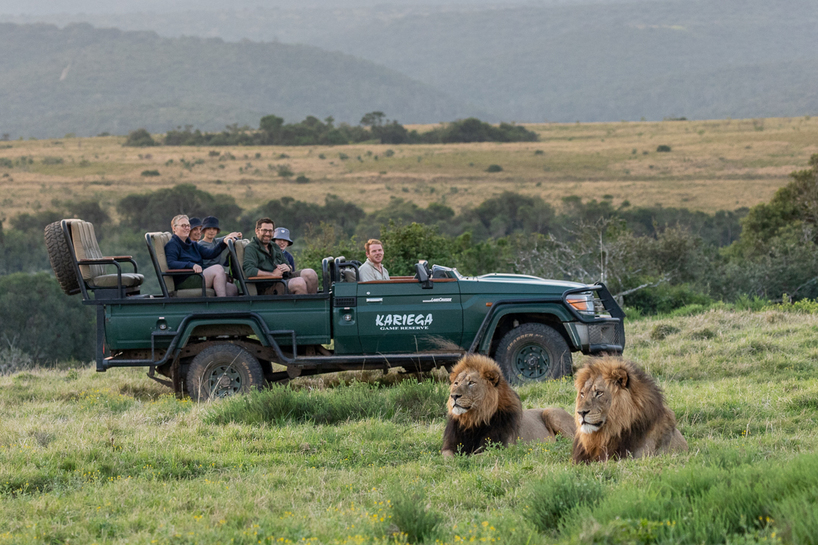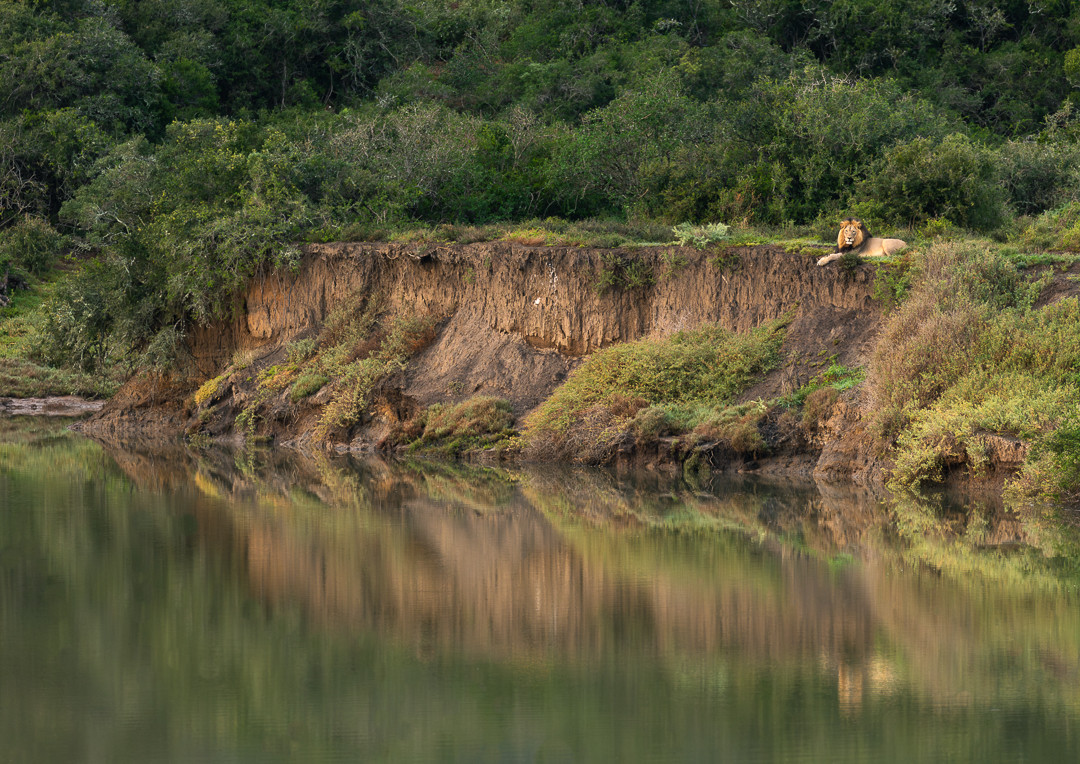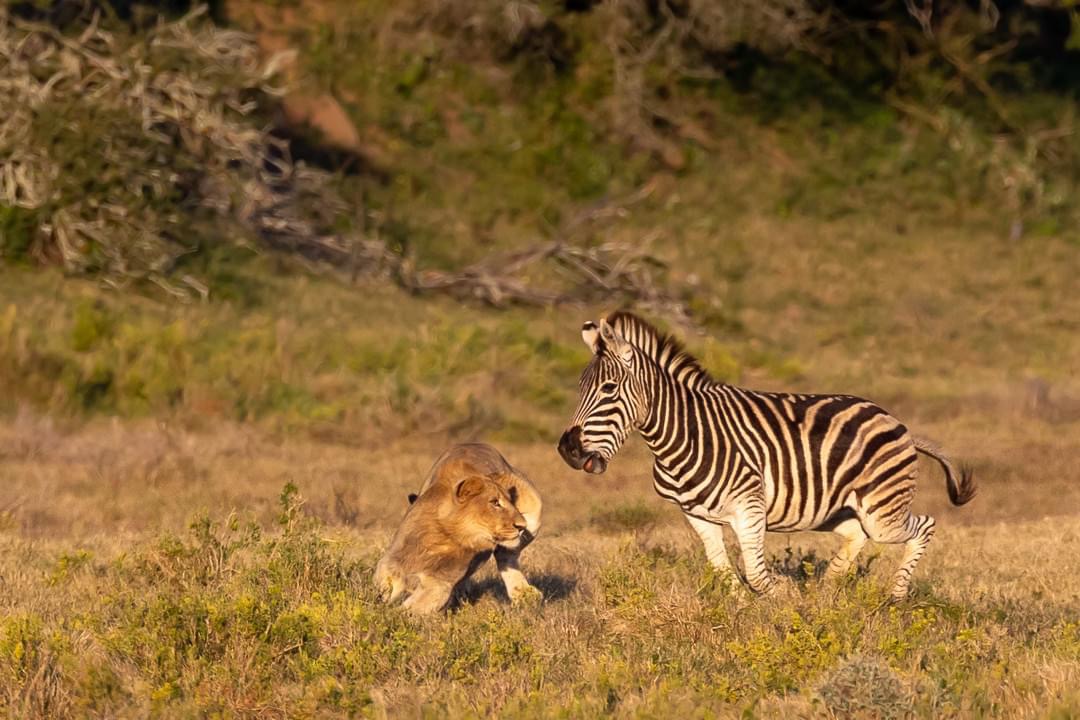Lion Conservation: Strengthening the Balance of Nature

The delicate balance of ecosystems relies heavily on the intricate interactions between predator and prey, social hierarchies, and the genetic diversity within species populations. Kariega Game Reserve, renowned for its commitment to conservation, has introduced two three-year-old male lions from Camdeboo Private Game Reserve as part of a larger, scientifically managed strategy to ensure the long-term health and vitality of its lion population. This decision is not only pivotal for the well-being of the lion pride but also plays a crucial role in maintaining ecological balance within the reserve.
Mimicking Natural Processes
Lions in Kariega are part of a meta-population strategy, a conservation approach that connects isolated populations to mimic the natural processes seen in open systems. In the wild, lion populations are regulated by a range of factors, including competition, territorial dynamics, and gene flow through dispersal. By managing lions across multiple reserves, conservationists aim to maintain genetic diversity and integrity, reducing the risk of inbreeding and its associated negative effects.
Introducing non-related nomadic males is key to this approach. At around 32-36 months, male lions in the wild naturally disperse from their natal pride, becoming nomads. This dispersal serves two primary purposes: it prevents genetic bottlenecks by ensuring lions from different areas mix, and it mirrors the natural process where these young males will eventually challenge dominant males for control of territory and breeding rights. In Kariega, the introduction of these young lions will promote genetic diversity, strengthen the pride's social structure, and ensure that the population remains robust and resilient.
Fear Landscapes
The presence of nomadic males also introduces fear-landscapes, areas where lion movements create an atmosphere of caution among herbivores and other predators. These fear landscapes are critical in promoting pride cohesion, a vital aspect of lion social behaviour. The introduction of new males increases competition, which in turn strengthens pride bonds and sharpens territorial defences. As these new males mature, they will challenge the dominant males, perpetuating the natural cycle of competition and pride leadership.
This internal competition is not only essential for maintaining the social structure within the lion population but also acts as a natural population density control mechanism. In open systems, territorial disputes among males ensure that populations do not grow unsustainably large. By mimicking this natural process in a managed reserve, Kariega aims to sustain a balanced lion population without the need for external interventions.

Role in Prey Control and Ecosystem Health
Beyond their social and genetic contributions, these young nomadic lions will play a crucial role in maintaining the ecological balance of Kariega. Nomadic males are highly effective predators, often focusing on smaller prey species that may escape the attention of established prides. In Kariega, warthogs are among the prey species that can become overabundant if not controlled. Warthogs, while a vital part of the ecosystem, can multiply rapidly in the absence of natural predation, leading to overgrazing and deterioration of the veld condition. The introduction of these young males is expected to help regulate warthog numbers, thereby maintaining healthy stocking rates for a variety of herbivores and ensuring the continued vitality of the reserve's grasslands. This not only benefits the lions but also the entire ecosystem, as veld health directly impacts the availability of resources for all herbivores.
A Sustainable Future for Kariega’s Lions
By introducing these two young males, Kariega Game Reserve is taking a proactive approach to conservation, carefully managing its lion population within the framework of natural processes. This strategy supports genetic diversity, reinforces social hierarchies, and helps maintain the delicate predator-prey dynamics that are essential for a thriving ecosystem. As these young males settle into their new home, their presence will ripple through the reserve, benefiting not only the lion population but also the landscape and the many species that call Kariega home.
Through the meta-population strategy, Kariega is safeguarding the future of its lions while contributing to the broader goal of lion conservation across Africa.
In essence, the introduction of these two nomadic males represents a crucial step in sustaining a healthy, balanced, and resilient ecosystem at Kariega Game Reserve—one where lions continue to play their vital role as apex predators and keystone species. With their introduction, we welcome an exciting new area that will ensure the sustainability of the ecosystem and lion conservation.
A big thank you to senior guide Brendon Jennings for the above images! And too our ecologist Chris Reynecke for the knowledgeable information and efforts.










